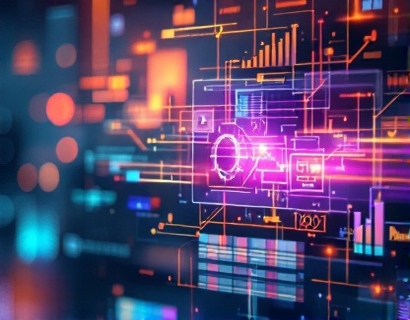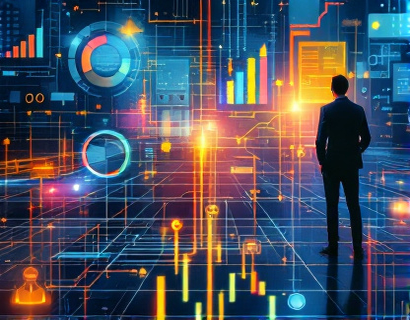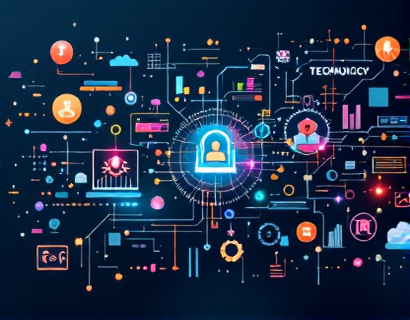Decentralized Verification for Ucosystem Assets: Empowering Premium Access with Trusted dApp Solutions
In the rapidly evolving landscape of digital assets, the need for secure, efficient, and transparent verification mechanisms has become paramount. The Ucosystem, a prominent platform for digital asset management and utilization, has introduced a groundbreaking solution to address these needs through decentralized verification. This innovative approach not only ensures the integrity and authenticity of digital assets but also empowers users to gain premium access and exclusive features within the Ucosystem. This article delves into the intricacies of this decentralized verification process, highlighting how it enhances digital asset management and secures user experiences.
Understanding Decentralized Verification
Decentralized verification refers to a process where the authenticity and ownership of digital assets are confirmed through a network of nodes rather than a central authority. In the context of the Ucosystem, this means that users can verify their asset holdings without relying on intermediaries, thereby reducing the risk of fraud and increasing transparency. The use of blockchain technology is central to this process, as it provides an immutable and tamper-proof ledger of transactions and asset ownership.
The core principle behind decentralized verification is the distribution of trust across a network of participants. Each node in the network independently validates transactions and asset states, ensuring that no single point of failure can compromise the system. This distributed approach not only enhances security but also promotes decentralization, aligning with the core values of blockchain technology.
Benefits of Decentralized Verification in the Ucosystem
One of the primary advantages of decentralized verification in the Ucosystem is the enhancement of user trust. By eliminating the need for central authorities, users can have greater confidence in the accuracy and integrity of their asset data. This trust is crucial for fostering a robust and active community within the Ucosystem, where users feel secure in their investments and interactions.
Another significant benefit is the reduction of transaction costs and delays. Traditional verification processes often involve intermediaries that charge fees and introduce delays. Decentralized verification, on the other hand, streamlines these processes, making them faster and more cost-effective. Users can verify their asset holdings and access premium features without incurring additional costs or waiting for approvals.
Enhanced Security and Privacy
Security is a top priority in the digital asset space, and decentralized verification significantly bolsteres this aspect. Since the verification process is distributed across multiple nodes, the risk of a single point of failure is minimized. This makes it extremely difficult for malicious actors to manipulate or alter asset data. Additionally, the use of cryptographic techniques ensures that user data remains private and secure, protecting against unauthorized access and breaches.
Privacy is another critical concern for digital asset holders. Decentralized verification systems can be designed to maintain user anonymity, allowing individuals to manage their assets without revealing sensitive information. This level of privacy is particularly important in an era where data breaches and identity theft are increasingly common.
Premium Access and Exclusive Features
For digital asset holders, gaining premium access to the Ucosystem can unlock a myriad of benefits. Decentralized verification enables users to seamlessly access exclusive features and services that enhance their overall experience. These features may include priority support, advanced trading tools, and access to limited-edition assets or events.
Premium access also facilitates greater engagement within the Ucosystem community. Users with verified holdings can participate in governance decisions, contribute to the development of new features, and collaborate with other like-minded individuals. This sense of community and shared purpose can lead to a more vibrant and dynamic ecosystem.
Verification Process and User Experience
The verification process in the Ucosystem is designed to be user-friendly and efficient. Users begin by connecting their digital asset wallets to the decentralized verification platform. The platform then interacts with the blockchain to confirm the ownership and authenticity of the assets. This process is automated and requires minimal user intervention, ensuring a smooth and hassle-free experience.
Once verification is complete, users are granted immediate access to premium features and benefits. The system maintains a real-time update of asset states, ensuring that users always have the most current information. This transparency not only builds trust but also empowers users to make informed decisions about their assets.
Technical Foundations of Decentralized Verification
At the heart of decentralized verification lies a combination of blockchain technology, smart contracts, and decentralized networks. Blockchain serves as the foundational ledger, recording all transactions and asset states in a transparent and immutable manner. Smart contracts automate the verification process, executing predefined rules and conditions without the need for intermediaries.
Decentralized networks, such as those built on platforms like Ethereum or Binance Smart Chain, provide the infrastructure for nodes to participate in the verification process. These networks ensure that the system is scalable and resilient, capable of handling a large number of transactions and verifications simultaneously.
Interoperability and Integration
To maximize the utility of decentralized verification, interoperability with other blockchain platforms and digital asset ecosystems is essential. This allows users to verify their assets across multiple platforms seamlessly, enhancing the overall user experience. Integration with popular wallet applications and trading platforms further simplifies the process, making it accessible to a broader audience.
APIs and developer tools play a crucial role in facilitating this interoperability. By providing robust APIs, the verification platform enables developers to build custom applications and services that leverage the verified asset data. This ecosystem of integrated solutions fosters innovation and expands the capabilities of the Ucosystem.
Challenges and Considerations
While decentralized verification offers numerous advantages, it is not without its challenges. One of the primary concerns is the scalability of the network. As the number of users and transactions increases, the system must maintain performance without compromising on security or speed. Continuous optimization and upgrades are necessary to address these scalability issues.
Another consideration is the user education and adoption. Decentralized technologies can be complex, and not all users may be familiar with the underlying concepts. Providing comprehensive documentation, tutorials, and support resources is essential to help users understand and utilize the verification system effectively.
Future Developments
The future of decentralized verification in the Ucosystem is promising, with several exciting developments on the horizon. One area of focus is the integration of advanced cryptographic techniques, such as zero-knowledge proofs, to enhance privacy and security further. These technologies allow users to prove ownership without revealing the actual asset details, adding an extra layer of privacy.
Additionally, the exploration of cross-chain verification capabilities will enable users to verify their assets across different blockchain platforms, creating a more unified and interconnected ecosystem. This interoperability will not only enhance user convenience but also drive broader adoption of decentralized verification solutions.
Conclusion
Decentralized verification for Ucosystem assets represents a significant leap forward in digital asset management. By leveraging blockchain technology and decentralized networks, this solution provides a secure, efficient, and transparent way to verify asset holdings. The resulting premium access and exclusive features not only enhance the user experience but also foster a more engaged and active community within the Ucosystem.
As the digital asset landscape continues to evolve, decentralized verification will play an increasingly vital role in ensuring the integrity and accessibility of digital assets. Embracing these innovative solutions is essential for anyone looking to maximize the value and potential of their digital holdings.










































